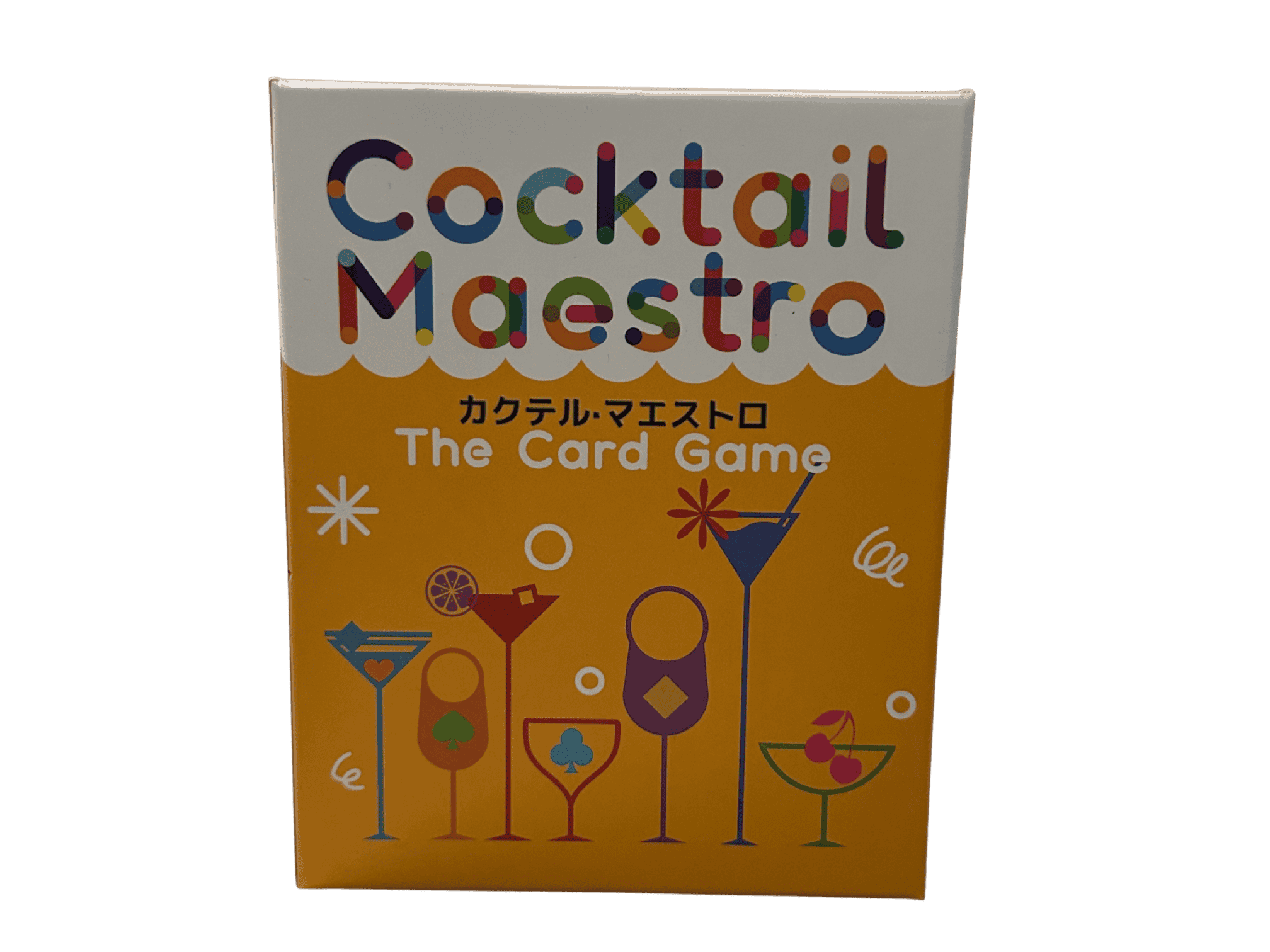Cocktail Maestro: The Card Game
First Impressions
Cocktail Maestro: The Card Game looks absolutely delightful right out of the box. The cards are colorful, and bursting with visual energy. Each card represents a cocktail and ingredient, or a special power.
However, before you can start shaking up drinks and showing off your mixology skills, you’ll have to make it through a very confusing rulebook.
The English version, unfortunately, feels like a translation after a translation. Still, beneath the muddled text lies a genuinely creative and fast-paced memory game that rewards memory, clever risk-taking, and a little bit of luck.
The Components of Cocktail Maestro
Overview: What’s in the Shaker?
Each player takes on the role of a bartender, competing to create the most accurate and impressive cocktails possible. You’ll be juggling Public Orders (open recipes anyone can complete), Private Orders (your own), and managing your limited number of Mixers - small piles of cards representing your drink-in-progress.
At its core, Cocktail Maestro is a memory management and hand optimization game with light deduction and a dash of push-your-luck.
How to Play (Simplified Overview)
Setup
Shuffle all Cocktail Cards into a central deck.
Flip 4 Public Orders (visible recipes) face-up.
Flip 5 Trump Cards beside the deck (special one-use powers).
Each player starts with 1 to 4 face-down cards (depending on how many they choose), each forming their starting Mixers (piles).
The rulebook says “return Trump cards to the box,” but since there’s literally no box area, it clearly means “remove them from play.”
On Your Turn
You must choose one main action:
Draw 4 Cocktail Cards and play them all (discard, make Private Orders, or add ingredients to Mixers), or
Use a Trump Card for a one-time special ability.
After that, you may take any number of optional actions, including:
Empty a Mixer,
Peek at a Mixer (for a penalty token),
Merge two Mixers,
Attempt to finish a Public or Private Order.
The flexibility here is nice (at least once you finally realize that you can chain actions together in the same turn).
Finishing an Order
Use one Mixer to complete either a Public or a Private Order. Compare your ingredient cards to the recipe:
Exact match → Good score.
Off by one quantity → Fair score.
Anything else → failure.
Discard the Mixer
You can discard the mixer afterward and keep the completed Order for points.
The Trump cards of Cocktail Maestro
5. Round End & Scoring
A round ends when a player completes the last Public Order or anyone completes four Orders total. However, what happens if this does not occur within a round remains unclear. Our assumption was to simply redraw the 4 cards once each player finished them.
Add up your Good and Fair scores, subtract penalties from “Forgotten Tokens,” and gain +1 bonus point for each distinct cocktail color you’ve completed.
6. Winning the Game
After 8 rounds, or when someone reaches 100 points, the player with the highest total becomes the Cocktail Maestro.
Gameplay Experience
Once you push through the messy rulebook, Cocktail Maestro flows surprisingly well. The tension between memory (remembering what you’ve hidden face-down in Mixers) and risk (peeking costs points!) is what gives the game its bite.
Every turn feels like a mini-puzzle:
It’s a clever balance between intuition and deduction, with the Trump Cards adding just enough spice to keep each round unique.
Thematically, it’s spot-on. You really do feel like a busy bartender trying to remember what you just poured - and laughing when you realize your “fancy martini” actually has two lemons and no gin.
The Language Barrier
Unfortunately, the English translation is the game’s weakest ingredient.
Instructions like “Place Trump Cards into the box” leave you scratching your head (there’s no box space in the game!).
Key terms such as Mixer, Order, and Ingredient aren’t explained clearly.
The rulebook opens too much room for interpretation and doubt. Sometimes, you have to make assumptions.
The amount of rules to remember is extensive, and you are most likely going to need some practice.
You may spend the first hour simply decoding what the rules mean.
And while the Japanese text on every card adds aesthetic flair, it’s also a constant reminder that this wasn’t designed with English speakers in mind. A quick-reference icon guide or translated subtitle would make the experience much smoother.
Cocktail Maestro, The Card Game
Design & Components
Visually, Cocktail Maestro is lovely. The cards are bright and thematic, although not so easy to differentiate by color given the constant presence of yellow.
The component quality is solid, and the overall presentation feels nice. The only real issue is the lack of clarity in iconography and the absence of English card text, alongside a messy rulebook, which slows down new players.
The Verdict
Theme: 8/10
Artwork & Components: 7/10
Gameplay 7.5/10
Rulebook Clarity: 4/10
Overall Enjoyment: 7/10
Final Thoughts
Cocktail Maestro: The Card Game is an incredibly charming idea wrapped in a needlessly complex presentation. Once you understand how it works and make some assumptions, it can deliver a fun, tense, and memory-driven experience that’s unlike most card games on the market.
But the barrier to entry is real - the English rulebook desperately needs an overhaul. Expect your first playthrough to be an exercise in group interpretation, not instant fun.
Still, if you’re patient and willing to untangle its linguistic knots, the game rewards you with laughter, clever strategy, and a surprisingly strong thematic payoff.
Final Rating: 7/10.
At Playcracy, we playtest games so that their expansion into new markets can be seamless and efficient. Contact us now!


